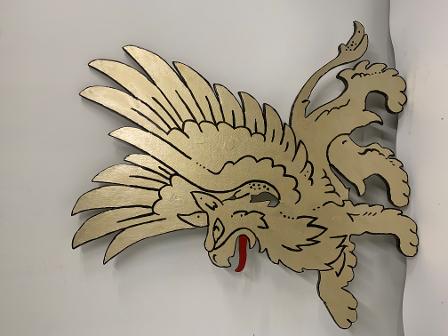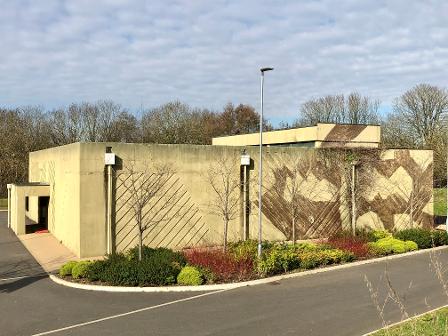Griffin

The griffin you can see in the photo was the emblem for 2119th Communications Squadron, who were based at RAF Uxbridge from 1979 to 1996. Many of their duties were carried out in a secure operations bunker near Hillingdon House and occassionally in the Uniter building, which is preserved today alongside the Battle of Britain Bunker.
The Uniter is a Cold War bunker originally constructed during the 1970s and was operational until the 1990s when it was decommissioned. Marconi was responsible for creating the UNITER system - a network of communications for operational RAF stations across the UK (a Secure, Survivable, Integrated Network - SSIN). The Uniter was also part of an American enclave for the US Automatic Voice Network (AUTOVON), a global communications system and Hillingdon was considered an important European hub.
The 2119th Communications Squadron had two key duties. The first was to operate one of two 'switching stations' for AUTOVON (the military telephone network) in Britain. The second mission was to manage long haul communications (microwave) for all USAF bases in southeast England. Operational activities took place in the AUS building (where the Battle of Britain Bunker Visitor Centre is now), which had on it a large microwave radio antenna, as well as the military communications switch and 2119th's technical control facility.
In his book - Home Bases: Memories & Stories of US Military Bases Around London - Sean Kelly discusses the process of deciding upon and then designing the griffin emblem after the original emblem was turned down. He states: 'Eventually a unit logo with a griffin at the centre was agreed and a USAF commissioned a brown painted and silver-highlighted three-foot high wooden outline griffin and placed high up on the side of the bunker.'

The Lend-Lease Act did not just provide economic and military support for countries fighting Nazi Germany, but also helped Roosevelt to promote America as the predominant force of international economic and political support, which was sustained long after the Second World War had ended. This was evident in the continuing presence of American service personnel in all areas of the globe, including the London Borough of Hillingdon post-1945.